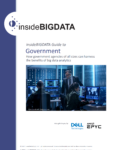Building an E-commerce Scraper
In this sponsored post, we sit down with Aleksandras Šulženko, Product Owner at Oxylabs.io, to discuss the past, present, and future of web scraping. He has been involved with both the technical and business side of automated collection for several …







